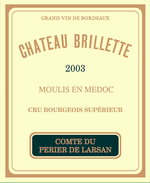Here are exerpts from a soon-to-be published interview with yours truly on a blog specializing in event and wedding planning. I actually assisted a couple of years ago in providing the wine pairings for the wedding of the proprietress of On The Dot Event Planning. Recently, she asked me to be a wine consultant for her future events, which is a wonderful compliment. Let’s hope her client’s taste buds are alligned with mine!
****
When did your appreciation for wine start?
I don’t think I really appreciated wine until roughly ten years ago when I enrolled in a “Wines Of the World” extension course at the University of California in Irvine. Our instructor was a lot of fun and his enthusiasm for the subject was infectious. That was when I started to understand wine as an accompaniment or enhancement to a meal, rather than just an alternative to beer or spirits.
What are your favorite wine varietals and why?
That’s a tough question, because there are too many varietals, too many geographic regions growing world class wine and too many good winemakers. Ultimately, I have to look at this subjectively and say in the white category, I love Sauvignon Blanc from New Zealand and Albarino from Spain. They are both very unique white wines. On the red side of things, I really enjoy a Pinot Noir from Oregon, or a Syrah from the Central Coast of California. Also, I love Malbecs from Argentina and Cabernet Sauvignon from NapaValley. I’m excluding favorite wine blends and thus I haven’t really talked about Bordeauxor red wines from Tuscany. As for why I like these, I guess it brings back good memories of a dinner I had or the company I drank the wine with.
For brides that don’t know that much about wine, what are your recommendations for a red wine and a white wine that would go with just about everything?
I think you want to have the combination of an elegant, versatile and cost-friendly wine. Elegant, because you want your guests to say “Mmmm. This is good wine!” Versatile, because you want something which will taste good with what you’re serving your guests for lunch or dinner. Cost-friendly, because you really shouldn’t be worried about the wine overly impacting your wedding budget. As a result, I’m always inclined to recommend a Riesling or an unoaked Chardonnay for white wine, because they fit these categories. Pinot Noir, Barbaresco from Italy and a French Gamay from the Beaujolais region of France are also versatile reds.
For brides who are holding weddings that are more ethnic in nature, perhaps a Chinese wedding or Indian wedding, what would you recommend that they pair with their food?
The type of food served offers really fun pairings. Both types of food benefit from a Riesling or Gewurztraminer as far as good white wines. Zinfandel is a robust and slightly spicy red varietal which is very successful with heartier dishes.
What’s the difference between Champagne, sparkling wine, and Prosecco?
The difference is primarily geographic. Champagne is made in a region of Franceof the same name. Only wines from this region can legally be called “Champagne.” “Prosecco” hales from Italyand is named after the grape from which it is made. “Cava” is a name given to sparkling wines from Spain. “Sparkling wine” is what you name bubbly from places where there is no geographic designation. California and Oregon make world class sparkling wine.
For brides that decide to go the more casual route in cuisine, say a barbeque or comfort food, what would be the best wine to serve with that type of food and what brands would you recommend that would be at a reasonable price?
You definitely don’t want to invest in a complicated, high end wine, because the subtleties in flavors in these bottles will be lost when paired with a burger or with ribs. It’s generally a good idea with casual lunches and dinners to get wines which emphasize fruit. In wine lingo, they’re called “fruit bombs.” It’s difficult to give one or two suggestions, because of the variety of food and wine combinations. One recommendation is to look in the Southern Hemisphere. For example, Argentina produces an amazing white wine varietal called Torrontes which is aromatic and refreshing. Most wines retail for less than $15 a bottle. Australia is well known for producing Semillon, which goes great with vegetables and salad. Again, you can find relatively inexpensive wines. Chilean red wines like Carmenere are an even better value. You can find excellent Carmenere which goes exceptionally well with hamburgers at $10 or less.
****
Make sure you check with Angie’s site for more of the interview. Thanks to Angie and On The Dot Event Planning for the opportunity to talk about my favorite subject!

